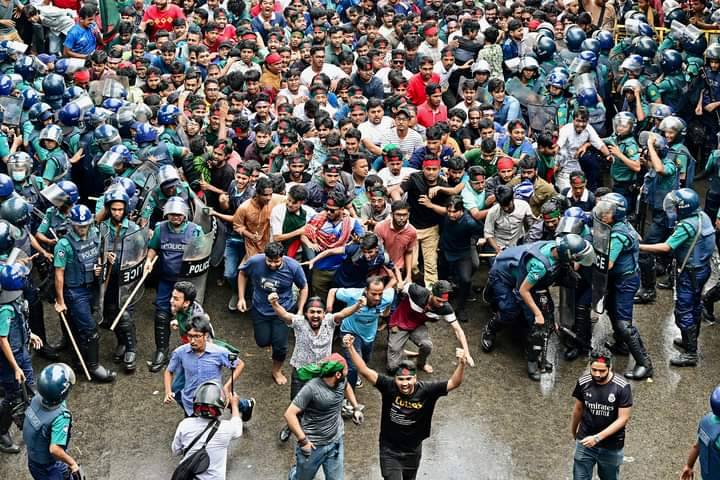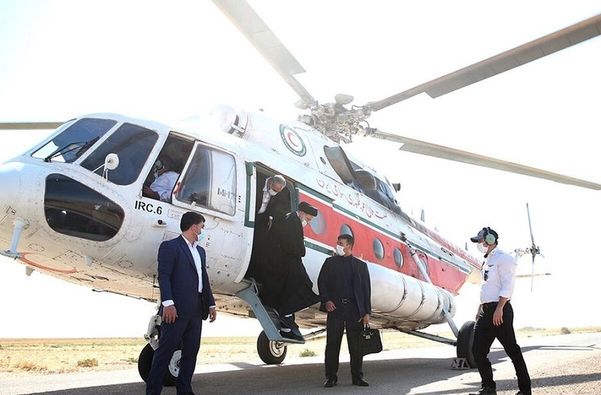Kathmandu, July 24, 2024 — A tragic aviation accident occurred in Nepal today when a Saurya Airlines aircraft crashed shortly after takeoff from Tribhuvan International Airport. The incident has claimed the lives of 18 of the 19 people on board, leaving the nation in mourning.
Details of the Incident
The aircraft, a Bombardier CRJ200, was en route to Pokhara for scheduled maintenance. According to initial reports, the plane veered off course moments after taking off from the runway. It then crashed into a field near the airport’s eastern boundary. The crash resulted in a massive fire, with thick plumes of smoke seen billowing into the sky. The sole survivor of this devastating incident was the pilot, Captain MR Shakya, who sustained injuries and is currently receiving medical treatment.

आज Saurya Airlines को प्लेन दुर्घटनामा पर्नु भएको पाइलट मनिष शाक्य अहिले खतरा मुक्त हुनु भएको छ। #Getwellsoon pic.twitter.com/JHCODrsvK6
— Routine of Nepal banda (@RONBupdates) July 24, 2024
Rescue Efforts and Investigation
Rescue teams, including airport staff and local emergency responders, quickly rushed to the scene. Despite their swift response, the fire engulfed the aircraft, making rescue efforts extremely challenging. All 18 victims, including one foreign national from Yemen, have been confirmed dead.
The Civil Aviation Authority of Nepal has announced an investigation into the crash. Preliminary findings suggest that the aircraft may have experienced technical issues, but the exact cause is yet to be determined. The flight was not carrying any passengers besides the technical staff heading to Pokhara for maintenance work.
Details of the passengers on board the Saurya Airlines plane that crashed at the Tribhuvan International Airport

Nepal's Aviation Safety Record
According to the Geneva-based Bureau of Aircraft Accidents Archives (B3A), Nepal has seen 68 aviation accidents since 1946, which have claimed a total of 900 lives. Nepal has a history of aviation accidents, often attributed to challenging terrain and unpredictable weather. This latest tragedy highlights ongoing concerns about aviation safety in the region. The country has been working on improving its aviation infrastructure and safety protocols, but incidents like this underscore the need for continued vigilance and improvements. Most recently, at least 72 people were killed in a Yeti airlines crash in January 2023

The moment Saurya Airlines plane crashed at Kathmandu airport.
Nation in Mourning
The government of Nepal has expressed deep condolences to the families of the victims. Prime Minister KP Sharma Oli has called for a thorough investigation and has pledged support to the affected families. Tribhuvan International Airport has resumed operations, but the atmosphere remains somber as the nation grieves this loss.
This incident is a stark reminder of the unpredictability and risks associated with air travel, particularly in regions with challenging flying conditions. As the investigation continues, there is hope that lessons will be learned to prevent future tragedies.
For further updates on this developing story, stay tuned to reliable news outlets and official statements from Nepali authorities.
Nepal's Air Safety Struggles: A Critical Look at Challenges and Solutions
Nepal’s aviation safety record has been a concern for several years due to a combination of factors, including geographical, infrastructural, regulatory, and operational challenges. Here are some key reasons:
1. Challenging Geography
- Mountainous Terrain: Nepal is home to eight of the world’s ten highest peaks, including Mount Everest. The country’s rugged and mountainous terrain makes flying particularly hazardous. Airports are often situated in valleys with high surrounding peaks, requiring pilots to navigate complex approaches and departures.
- Unpredictable Weather: The weather in Nepal can change rapidly and unpredictably, with sudden fog, heavy rain, and strong winds. These conditions can make flying difficult and increase the risk of accidents.
2. Infrastructural Issues
- Limited Airport Infrastructure: Many of Nepal’s airports lack advanced navigational aids and modern infrastructure. This can make landings and takeoffs challenging, especially in bad weather.
- Short and Challenging Runways: Some airports, like the famous Lukla Airport, have short runways with steep drop-offs, making them difficult to approach and depart from, especially for less experienced pilots.
3. Regulatory and Operational Challenges
- Safety Oversight: Nepal has faced criticism for its regulatory oversight of the aviation sector. The Civil Aviation Authority of Nepal (CAAN) has been cited for inadequate safety oversight and enforcement of regulations.
- Training and Standards: There have been concerns about the training and qualifications of some pilots and crew members. Ensuring that all personnel meet international standards can be challenging, especially in a country with limited resources.
4. Aging Aircraft Fleet
- Older Aircraft: Many of the aircraft operating in Nepal are older models, which can be more prone to mechanical failures. The maintenance of these aircraft is crucial but can sometimes be inconsistent.
5. Economic and Resource Constraints
- Limited Resources: As a developing country, Nepal faces financial and resource limitations, impacting the quality and frequency of maintenance and the ability to invest in newer, safer aircraft and technologies.
- High Demand for Air Travel: Given the country’s challenging terrain and limited road infrastructure, there is a high demand for air travel. This demand can sometimes lead to overuse of aircraft and inadequate maintenance.
6. International Concerns and Bans
- EU Airspace Ban: Due to safety concerns, the European Union has banned all Nepal-based airlines from operating in its airspace since 2013. This ban highlights international concerns over Nepal’s aviation safety standards.
7. Historical Accidents
- Recurrent Accidents: Nepal has experienced several major accidents over the years, which have brought attention to the need for improvements in aviation safety.
List of notable plane crashes in Nepal since 1946
1. 1946 – Douglas DC-3 Crash
- Date: November 28, 1946
- Aircraft: Douglas DC-3
- Location: Near Bhairahawa
- Casualties: All 14 people on board were killed.
- Details: The aircraft, operated by Indian National Airways, crashed into a hill during poor weather.
2. 1960 – Douglas DC-3 Crash
- Date: August 1, 1960
- Aircraft: Douglas DC-3
- Location: Near Kathmandu
- Casualties: All 31 people on board were killed.
- Details: The aircraft crashed into a mountain shortly after takeoff from Kathmandu’s Gauchar Airport.
3. 1970 – Douglas DC-3 Crash
- Date: December 15, 1970
- Aircraft: Douglas DC-3
- Location: Near Kathmandu
- Casualties: 18 killed, 4 survivors.
- Details: The Royal Nepal Airlines aircraft crashed into a mountain during a domestic flight.
4. 1973 – Royal Nepal Airlines Douglas DC-3
- Date: March 10, 1973
- Aircraft: Douglas DC-3
- Location: Near Kathmandu
- Casualties: All 31 on board were killed.
- Details: The aircraft crashed into a mountain during descent.
5. 1992 – Thai Airways Flight 311
- Date: July 31, 1992
- Aircraft: Airbus A310
- Location: Near Kathmandu
- Casualties: All 113 people on board were killed.
- Details: The aircraft crashed into a mountain during an approach to Kathmandu in bad weather.
6. 1992 – Pakistan International Airlines Flight 268
- Date: September 28, 1992
- Aircraft: Airbus A300
- Location: Near Kathmandu
- Casualties: All 167 people on board were killed.
- Details: The aircraft crashed into a hillside while approaching Tribhuvan International Airport.
7. 2000 – Royal Nepal Airlines DHC-6 Twin Otter
- Date: July 27, 2000
- Aircraft: DHC-6 Twin Otter
- Location: Near Dadeldhura
- Casualties: All 25 on board were killed.
- Details: The aircraft crashed into a mountain due to poor visibility.
8. 2012 – Agni Air Flight CHT
- Date: May 14, 2012
- Aircraft: Dornier Do 228
- Location: Near Jomsom
- Casualties: 15 of 21 on board were killed.
- Details: The aircraft crashed during an attempt to land at Jomsom Airport.
9. 2014 – Nepal Airlines Flight RA-183
- Date: February 16, 2014
- Aircraft: de Havilland Canada DHC-6 Twin Otter
- Location: Near Arghakhanchi
- Casualties: All 18 on board were killed.
- Details: The aircraft crashed into a hill in bad weather.
10. 2018 – US-Bangla Airlines Flight 211
- Date: March 12, 2018
- Aircraft: Bombardier Dash 8 Q400
- Location: Tribhuvan International Airport, Kathmandu
- Casualties: 51 of 71 on board were killed.
- Details: The aircraft crashed while landing, veering off the runway.
11. 2022 – Tara Air Flight 197
- Date: May 29, 2022
- Aircraft: Twin Otter
- Location: Near Mustang
- Casualties: All 22 on board were killed.
- Details: The aircraft crashed into a mountain during a flight from Pokhara to Jomsom.
12. 2024 – Saurya Airlines Crash
- Date: July 24, 2024
- Aircraft: CRJ-200
- Location: Near Tribhuvan International Airport, Kathmandu
- Casualties: 18 of 19 on board were killed.
- Details: The aircraft crashed shortly after takeoff during a routine flight.
These incidents highlight the ongoing challenges faced by Nepal’s aviation sector, including difficult terrain, variable weather conditions, and the need for enhanced safety measures.
The details provided are based on a combination of publicly available information from aviation accident databases, historical records, and news reports. Specifically, sources like the Aviation Safety Network (ASN), government reports, and news outlets such as BBC, CNN, and local Nepali news agencies provide comprehensive records of aviation accidents.


















